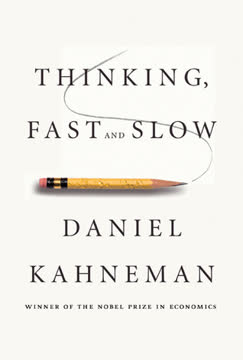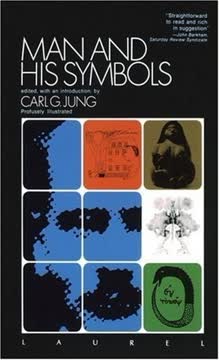Key Takeaways
1. Dreams Are Not Nonsense But Meaningful Psychological Experiences
The dream is not comparable to the irregular sounds of a musical instrument, which, instead of being played by the hand of a musician, is struck by some external force; the dream is not meaningless, not absurd, does not presuppose that one part of our store of ideas is dormant while another part begins to awake.
Psychological Significance of Dreams. Freud revolutionized understanding of dreams by arguing they are not random neural firings, but structured psychological phenomena with deep meaning. Dreams represent a complex form of communication from the unconscious mind, conveying thoughts, wishes, and psychological tensions that cannot be directly expressed in waking life.
Dreams as Meaningful Communication. Unlike previous theories that considered dreams nonsensical, Freud proposed that dreams are carefully constructed psychological productions. They follow specific psychological laws and use unique mechanisms of representation, including symbolism, condensation, and displacement, to communicate repressed thoughts and desires.
Psychological Complexity. Dreams are not simple, random experiences but intricate psychological texts that require careful interpretation. They represent a sophisticated method of expressing unconscious material while simultaneously protecting the dreamer from directly confronting potentially disturbing psychological content.
2. Dreams Represent Wish Fulfillments from the Unconscious Mind
The dream is a wish-fulfilment.
Unconscious Desire Manifestation. Dreams fundamentally represent the unconscious mind's attempt to fulfill suppressed wishes and desires. These wishes often originate in childhood and cannot be directly expressed in waking life due to social, moral, or psychological constraints.
Wish Fulfillment Mechanisms. The unconscious mind creates elaborate scenarios in dreams that symbolically satisfy desires that are unacceptable or impossible in reality. These wishes can range from sexual and aggressive impulses to more complex psychological longings for recognition, power, or emotional resolution.
Psychological Protection. By transforming potentially threatening desires into symbolic dream narratives, the mind protects itself from direct confrontation with uncomfortable psychological material. Dreams thus serve as a "safety valve" for releasing repressed psychological tensions in a disguised, acceptable manner.
3. Dream Formation Involves Complex Psychological Processes
The dream-thoughts and the dream-content present themselves as two descriptions of the same content in two different languages.
Psychological Translation. Dream formation is a complex process of translating unconscious thoughts into a visual, symbolic language. This translation involves multiple psychological mechanisms that transform raw psychological material into a comprehensible dream narrative.
Key Dream Formation Processes:
- Condensation: Combining multiple thoughts into single dream elements
- Displacement: Shifting psychological emphasis from important to seemingly trivial elements
- Symbolization: Representing abstract thoughts through concrete images
- Distortion: Disguising potentially threatening psychological content
Psychological Creativity. Dreams demonstrate remarkable psychological creativity, using sophisticated mechanisms to communicate complex unconscious material while simultaneously protecting the dreamer from direct psychological confrontation.
4. Dreams Use Symbolic Language and Condensation
Dreams are capable of representing the most complicated intellectual operations in the most striking manner.
Symbolic Representation. Dreams communicate through a rich symbolic language where objects, actions, and scenarios represent deeper psychological meanings. Symbols are not universal but are deeply personal and context-dependent.
Symbolic Language Characteristics:
- Multiple meanings embedded in single images
- Personal and cultural associations
- Metaphorical and indirect communication
- Layered psychological significance
Psychological Compression. Dreams demonstrate extraordinary ability to compress complex psychological material into concise, symbolic narratives. A single dream image can represent multiple thoughts, memories, and emotional experiences simultaneously.
5. Childhood Experiences Profoundly Influence Dream Content
Dreams are not comparable to the irregular sounds of a musical instrument, which, instead of being played by the hand of a musician, is struck by some external force.
Childhood as Psychological Foundation. Early childhood experiences form the primary source of dream material. Unresolved childhood conflicts, desires, and traumatic experiences continuously resurface in dream content, revealing their persistent psychological significance.
Developmental Psychological Dynamics:
- Sexual and aggressive impulses from childhood
- Unresolved family relationships
- Early psychological investigations and curiosities
- Fundamental psychological learning processes
Psychological Continuity. Dreams demonstrate that childhood experiences are not simply forgotten but remain active in the unconscious, continuously influencing psychological functioning throughout life.
6. Sexual and Aggressive Impulses Are Key Dream Sources
The sexual wishes of the child --in so far as they deserve this designation in their nascent state --awaken at a very early age.
Fundamental Psychological Drives. Sexual and aggressive impulses represent core psychological motivations that significantly influence dream content. These impulses, often originating in childhood, are typically repressed in waking life but find expression through dreams.
Psychological Manifestations:
- Oedipal complex representations
- Sexual curiosity and exploration
- Aggressive and competitive fantasies
- Power and domination themes
Unconscious Expression. Dreams provide a socially acceptable mechanism for expressing potentially threatening sexual and aggressive psychological material that cannot be directly communicated in waking life.
7. Dreams Employ Displacement and Distortion Mechanisms
Dream-displacement and dream-condensation are the two craftsmen to whom we may chiefly ascribe the structure of the dream.
Psychological Defense Mechanisms. Displacement and distortion represent critical psychological strategies for transforming potentially threatening unconscious material into acceptable dream narratives.
Key Distortion Techniques:
- Shifting psychological emphasis
- Symbolic substitution
- Emotional transformation
- Disguising original psychological content
Censorship Function. These mechanisms serve a protective psychological function, allowing the unconscious to communicate sensitive material while preventing direct, potentially traumatic confrontation.
8. Dream Interpretation Reveals Unconscious Psychological Dynamics
The dream is the (disguised) fulfilment of a (suppressed, repressed) wish.
Psychological Archaeology. Dream interpretation functions as a method of excavating unconscious psychological material, revealing hidden desires, conflicts, and unresolved psychological tensions.
Interpretation Principles:
- Careful analysis of dream elements
- Exploring personal associations
- Understanding symbolic representations
- Uncovering hidden psychological meanings
Therapeutic Potential. Dream interpretation provides a powerful tool for understanding individual psychological dynamics, facilitating personal insight and potential psychological healing.
9. Dreams Provide Insight into Repressed Desires and Conflicts
Dreams are capable of representing the most complicated intellectual operations in the most striking manner.
Psychological Window. Dreams offer a unique perspective into an individual's most deeply repressed desires, fears, and psychological conflicts that cannot be directly expressed in waking life.
Psychological Revelation Mechanisms:
- Symbolic representation of forbidden desires
- Transformation of threatening impulses
- Indirect communication of psychological tensions
- Preservation of psychological complexity
Unconscious Communication. Dreams represent a sophisticated psychological communication system that allows individuals to explore and process complex emotional and psychological material.
10. Psychological Censorship Shapes Dream Representation
The dream is the (disguised) fulfilment of a (suppressed, repressed) wish.
Psychological Protection. Dream censorship represents a critical mechanism for transforming potentially threatening unconscious material into psychologically acceptable narratives.
Censorship Strategies:
- Symbolic disguise
- Emotional transformation
- Displacement of psychological emphasis
- Indirect communication methods
Psychological Balance. Censorship enables individuals to explore complex psychological material while maintaining psychological equilibrium and protecting against potentially overwhelming emotional experiences.
Last updated:
FAQ
What's The Interpretation of Dreams about?
- Psychoanalytic exploration: Sigmund Freud's book delves into the significance of dreams, proposing that they are a form of wish fulfillment and reveal our unconscious desires and conflicts.
- Dream analysis technique: Freud introduces methods for interpreting dreams, focusing on understanding the latent content behind the manifest content through free association.
- Censorship in dreams: The book discusses how dreams are distorted by psychic censorship, which alters original thoughts to make them acceptable to the conscious mind.
Why should I read The Interpretation of Dreams?
- Foundational text in psychology: This book is a cornerstone of psychoanalysis, influencing modern psychology and our understanding of the human mind.
- Understanding human behavior: Freud's exploration offers insights into human motivations and the unconscious mind, helping readers understand how unresolved conflicts manifest in dreams.
- Cultural significance: The book has impacted literature, art, and culture, and engaging with Freud's ideas allows readers to appreciate their societal influence.
What are the key takeaways of The Interpretation of Dreams?
- Dreams as wish fulfillments: Freud posits that dreams serve to satisfy desires not acknowledged in waking life, often rooted in childhood experiences.
- Childhood experiences: Many dreams are influenced by early childhood, which continues to affect our adult lives and dream formation.
- Distortion and censorship: Dreams undergo distortion due to unconscious censorship, concealing deeper desires behind the manifest content.
What are the best quotes from The Interpretation of Dreams and what do they mean?
- "The interpretation of dreams is the royal road to a knowledge of the unconscious activities of the mind.": This highlights Freud's belief that analyzing dreams reveals hidden thoughts and desires.
- "Dreams are the guardians of sleep.": Freud suggests that dreams protect sleep by managing discomfort or distress, underscoring their role in processing waking experiences.
- "A dream is the fulfillment of a wish.": This captures Freud's theory that dreams represent unfulfilled desires, expressed symbolically during sleep.
How does Freud define the method of dream interpretation in The Interpretation of Dreams?
- Free association technique: Freud advocates for free association, where the dreamer shares thoughts related to the dream without censorship to uncover latent content.
- Analyzing dream symbols: Understanding symbols is crucial, as they often represent deeper meanings and subjective interpretations.
- Identifying wish fulfillment: The goal is to identify the underlying wish the dream fulfills, guiding the analysis of dream content.
What role do childhood experiences play in dreams according to Freud?
- Foundation of unconscious desires: Childhood experiences influence dreams, with unresolved conflicts resurfacing in distorted forms.
- Repressed memories: These experiences can resurface in dreams, impacting their content and meaning significantly.
- Symbolic representation: Dreams symbolize childhood experiences, allowing the dreamer to process and confront these memories.
How does Freud explain the concept of dream distortion?
- Censorship mechanism: Psychic censorship alters original thoughts in dreams to make them acceptable, disguising the true wish.
- Conflict between desires: Distortion occurs when there's a conflict between conscious and unconscious desires, leading to altered dream content.
- Symbolic representation: Distorted dreams use symbols to represent underlying wishes, making them less recognizable.
What is the Oedipus complex in The Interpretation of Dreams?
- Childhood sexual desires: Freud describes the Oedipus complex as a child's unconscious desire for the opposite-sex parent and rivalry with the same-sex parent.
- Cultural and literary references: The story of Oedipus illustrates these feelings, suggesting their universality across cultures.
- Repression and dreams: The complex often manifests in dreams, revealing suppressed feelings and desires.
How does Freud differentiate between manifest and latent content in dreams?
- Manifest content: This is the dream's storyline as remembered, often a distorted version of underlying thoughts.
- Latent content: Represents the hidden meaning, revealing unconscious desires and conflicts.
- Interpretation process: Dream analysis aims to uncover latent content by examining manifest content through associations and symbols.
What is the dream work process described in The Interpretation of Dreams?
- Condensation: Combines multiple ideas into a single dream element, creating complex interpretations.
- Displacement: Transfers emotional significance to less threatening objects, allowing indirect confrontation of feelings.
- Censorship: Alters dream content to disguise true meaning, crucial for understanding latent content.
What are some common symbols in dreams according to Freud?
- Sexual symbols: Many symbols represent sexual desires, manifesting as objects like tunnels or animals.
- Death and burial: Symbolize transformation or life changes, reflecting fears or desires related to change.
- Parental figures: Represent authority or nurturing, embodying internal conflicts regarding upbringing.
How does The Interpretation of Dreams relate to Freud's broader theories of psychoanalysis?
- Foundation of psychoanalysis: The book lays groundwork for Freud's theories on the unconscious, repression, and childhood experiences.
- Link to neuroses: Dream analysis is connected to treating neuroses, highlighting its therapeutic potential.
- Cultural impact: Freud's exploration of dreams has influenced psychology, literature, art, and popular culture.
Review Summary
The Interpretation of Dreams is a groundbreaking work by Freud, introducing his theory of the unconscious and dream analysis. Reviewers find it fascinating yet challenging, praising Freud's innovative approach while acknowledging cultural limitations. Many appreciate his writing style and depth of analysis, even if disagreeing with some conclusions. The book's impact on psychology and culture is widely recognized. Readers note its dense content requires careful study but offers valuable insights into the human psyche and the nature of dreams.
Similar Books










Download PDF
Download EPUB
.epub digital book format is ideal for reading ebooks on phones, tablets, and e-readers.









